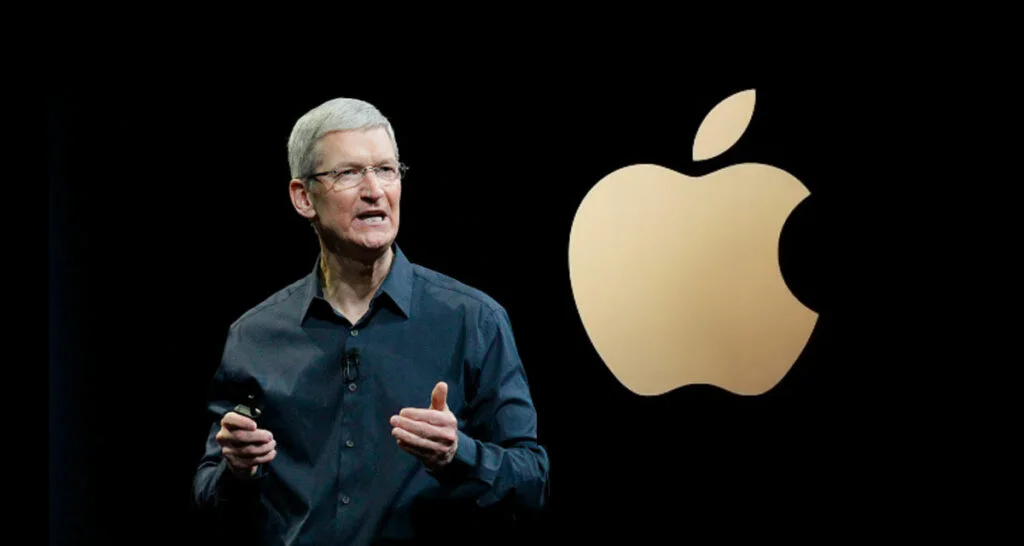With the unveiling of the iPhone 16e, Apple is ushering in a new era while subtly closing the chapter on one of its most recognizable product lines. As tech enthusiasts and consumers analyze the new device, one recurring question emerges: “Is this just a refined iPhone SE?” However, Apple’s strategic positioning of the iPhone 16e proves that it is far more than a simple rebranding—it is a meticulously planned move that aligns with the company’s broader vision.
Apple’s Smart Comparison: Keeping It in the Family
A key takeaway from Apple’s marketing push is that the iPhone 16e is being compared primarily to older iPhone models rather than to its Android competitors. This is a classic case of “comparing Apples to Apples,” a strategy that ensures Apple stays in control of the narrative.
Apple’s official announcement, spearheaded by CEO Tim Cook, highlights the iPhone 16e as a significant upgrade for users of older models. Rather than positioning it as a competitor to flagship Android devices, Apple is focused on maintaining and strengthening its ecosystem by targeting its existing customer base.
The iPhone 16e: Designed for a Captive Audience
Apple’s marketing strategy is both calculated and effective. The tech giant understands that users deeply invested in the Apple ecosystem—through services like iCloud, Apple Music, and the App Store—face significant hurdles when considering a switch to Android.
These customers are not entirely locked in, but their loyalty is reinforced by Apple’s seamless ecosystem. With each device upgrade, Apple deepens this connection, ensuring that users continue to benefit from their prior investments in the brand.
For iPhone owners looking to upgrade from older devices, the 16e presents an appealing option. It is not just a personal upgrade choice but also a perfect entry-level device for family members, particularly those new to the Apple experience. This strategic positioning allows Apple to keep users engaged while expanding its reach organically.
Avoiding Direct Android Comparisons
In the Android market, innovation is highly competitive, with manufacturers like Samsung, Google, and OnePlus constantly pushing the boundaries. However, Apple is not directly targeting Android users with the iPhone 16e. Instead, the company’s priority is reinforcing its hold on its current customer base.
Apple’s strategy isn’t about luring Android users with hardware specs alone. Rather, it leverages the power of brand loyalty, ease of transition within the ecosystem, and continuous software updates to keep users engaged. While Android manufacturers might focus on breakthrough features, Apple ensures that its users experience a seamless, optimized, and highly efficient upgrade path.
Battery Life: The Upgrade Everyone Wanted
One of the most common complaints about previous iPhone SE models was their subpar battery life. The original iPhone SE (2016) struggled to last an entire workday, and even later models didn’t make significant strides in this department.
Apple has addressed this long-standing issue with the iPhone 16e, boasting what it claims is the best battery life ever in a 6.1-inch iPhone. According to Apple, the 16e lasts up to six hours longer than the iPhone 11.
While this claim sounds impressive, the choice of comparison is intentional. Rather than measuring against the latest iPhone models, Apple looks back six years to the iPhone 11, a move that makes the improvement seem even more dramatic.
Apple’s First In-House Modem: The C1 Advantage

Another significant leap in the iPhone 16e is Apple’s transition to its first-ever in-house modem, the C1. Previously, Apple relied on Qualcomm for its cellular modems, but the new C1 is designed specifically for Apple’s hardware and software integration.
Apple describes the C1 as “the most power-efficient modem ever on an iPhone,” providing fast and reliable 5G connectivity. However, Apple’s comparison remains internal, avoiding direct benchmarking against Qualcomm or Samsung’s competing modems.
By controlling its modem technology, Apple can fine-tune power efficiency and connectivity while reducing its reliance on third-party suppliers. While real-world tests will determine its true capabilities, Apple’s decision to develop its modem is a long-term strategic move that could impact future iPhone designs.
The A18 Chip: Pushing Performance Boundaries
At the core of the iPhone 16e is the new A18 chip, promising major performance improvements. However, Apple’s chosen point of comparison is again telling—instead of measuring against last year’s A17, it is benchmarked against the A13 Bionic from the iPhone 11.
Apple claims, “The iPhone 16e is powered by our latest-generation A18 chip… with a 6-core CPU that is up to 80% faster than the A13 Bionic and a 16-core Neural Engine optimized for large generative AI models, running machine learning tasks up to six times faster.”
While the A18 undoubtedly delivers significant performance gains, Apple’s comparison choice suggests a strategic move to establish the iPhone 16e as a fresh and distinct product line, distancing it from the previous iPhone SE models.
iPhone 16e vs. iPhone 11: A Carefully Chosen Benchmark
Apple’s repeated comparisons to the iPhone 11 rather than the most recent iPhone SE model are no coincidence. The last iPhone SE closely resembled an iPhone 13 in an older design, making it a more logical performance benchmark.
However, referencing the iPhone 11—a six-year-old device—creates a more compelling performance narrative. This move not only highlights dramatic improvements but also subtly shifts the perception of the 16e away from being an “SE successor” and towards being an entirely new category.
A New Chapter in Apple’s Evolution

The iPhone 16e is more than just another model in Apple’s lineup—it is a pivotal step in Apple’s strategy. By redefining its entry-level iPhone with modern hardware, improved battery life, and an in-house modem, Apple is strengthening its ecosystem while laying the groundwork for future innovations.
Once the iPhone 16e launches on February 28, direct comparisons with Android flagships will offer a clearer picture of its strengths and limitations. Until then, Apple’s messaging paints the 16e as a refined, optimized upgrade designed for its loyal user base.
To put it simply, “Apple delivers its message just like its products—polished, efficient, and always within its own ecosystem.” The company is carefully selecting its comparisons, reinforcing its dominance, and ensuring that its users see the iPhone 16e as the logical next step in their Apple journey.




